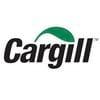Impact of Corn Quality on Poultry Energy Value and Production Cost
Published: June 10, 2025
Source : Dr. S. Sridhar / Product Manager – Optima Poultry Pvt Ltd
Corn remains the primary energy source in poultry diets. However, not all corn delivers equal nutritional value. Poor grain quality can significantly reduce its Metabolizable Energy (ME) for poultry, affecting both bird performance and production cost.
Energy Loss Equation in Poultry Due to Poor-Quality Corn
Barbarino and Rostagno (2001) developed an equation to estimate the Metabolizable Energy Lost (MEL) in poultry feed based on corn quality:
MEL (Kcal/kg)=−0.064+1.62×BRK+6.98×FRIM+10.06×MOLD+12.28×INS+5.87×ADC
Where:
- BRK = Broken grains (%)
- FRIM = Fragmented grains and impurities (%)
- MOLD = Grains contaminated with molds (%)
- INS = Grains attacked by insects (%)
- ADC = Grains affected by different causes (%)
Higher percentages of these defects lead to more energy loss per kilogram of feed

Observation: A downgrade from Type 0 to Type III corn results in an energy loss of 89 Kcal/kg, reducing ME from 3412 to 3323 Kcal/kg.
How This Affects Poultry Production Costs
- Lower Feed Energy ➜ Higher Feed Conversion Ratio (FCR)
- Reduced Growth and Productivity
- Hidden Economic Loss
Example: If 1000 birds consume 100 kg/day, a 48 Kcal/kg energy deficit (Type II corn) = 4,800 Kcal/day shortfall ➜ performance decline ➜ higher cumulative cost over grow-out period.mance decline ➜ higher cumulative cost over grow-out period.

Source: United States Department of Agriculture, Federal Grain Inspection Service. Grain Grading Primer. Washington, D.C.: USDA, October 2016.
Corrective Measures to Manage or Prevent MEL (Metabolizable Energy Loss):
Procure higher-grade corn: Using corn with minimal broken grains, mold contamination, and foreign impurities helps reduce MEL, thereby ensuring higher metabolizable energy availability to birds. This directly lowers the cost of compensating energy loss through expensive ingredients.
Implement grain quality testing using NIR (Near-Infrared Reflectance): Regular analysis of incoming corn batches for BRK, FRIM, MOLD, INS, and ADC helps in screening and rejecting low-quality corn before it enters the feed mill. This avoids the hidden cost of energy dilution in feed.
Avoid high moisture storage conditions: Storing corn in environments with excess humidity promotes mold growth and insect infestation, both of which significantly increase MEL. Maintaining optimal moisture levels (≤13%) is critical for preserving grain quality.
Use antioxidant and mold inhibitor additives: Incorporating mold inhibitors during grain storage and transport (e.g., propionic acid or buffered acids) helps prevent mycotoxin development and preserves energy content by reducing MOLD-induced MEL.
Add energy-releasing enzymes in feed: Supplementation with enzymes like amylase, xylanase, or glucanase helps release more energy from starch and non-starch polysaccharides in low-quality grains, thus mitigating the effects of MEL.
Rebalance the feed formulation: If unavoidable MEL occurs, nutritionists can adjust the energy content in the feed by adding fats or oils to meet the target metabolizable energy (ME) levels. This ensures performance isn’t compromised.
Ensure proper grain storage and handling practices: From procurement to processing, reduce physical damage to grains by minimizing mechanical breakage, friction, and excessive handling. This lowers BRK and FRIM percentages, which directly contribute to MEL.
Take-Home Message:
The energy value of corn is not static; it fluctuates based on its physical and microbial quality.Relying solely on book ME values without corn classification can undermine productivity and profitability.
Implementing grain quality control and feed formulation corrections is essential for consistent performance.
Barbarino, F. J., & Rostagno, H. S. (2001). Estimation of metabolizable energy loss in corn due to defects. Proceedings of the Poultry Science Association
ROSTAGNO, H. S.; ALBINO, L. F. T.; CALDERANO, A. A.; HANNAS, M. I.; SAKOMURA, N. K.; PERAZZO, F. G.; ROCHA, G. C.; SARAIVA, A.; ABREU, M. L. T.; GENOVA, J. L.; TAVERNARI, F. C. Brazilian Tables for Poultry and Swine: Composition of Feedstuffs and Nutritional Requirements. 5th ed. Viçosa, MG: Universidade Federal de Viçosa, 2017
Related topics:
Mentioned in this news release:
Recommend
Comment
Share

Would you like to discuss another topic? Create a new post to engage with experts in the community.













